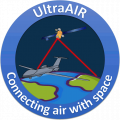For planet earth and beyond
Projects
In this page you can search all ARTES except ARTES 20 IAP, which can be found on Business Applications - Projects.
Please click on the + symbol to expand the Filter By ARTES Elements to narrow your search. If you are looking for a specific element select from the list provided and click on the Apply button to start the search and display the results.
Displaying 241 - 280 of 1582
LCUT
Status date:
Prime Contractor
Subcontractors
Esa-DTH

Status date:
Prime Contractor
OneSat eDPS

Status date:
Prime Contractor
Subcontractors
SCFC

Status date:
Prime Contractor
Subcontractors
Eurostar NEO PTA
Status date:
Prime Contractor
Subcontractors
UTWM
Status date:
Prime Contractor
ACE
Status date:
Prime Contractor
Subcontractors
SHADER
Status date:
Prime Contractor
Subcontractors
CCD5 Integrated System
Status date:
Prime Contractor
Subcontractors
Spainsat-NG phase 1
Status date:
Prime Contractor
3D Thermal IF
Status date:
Prime Contractor
Subcontractors
SSM
Status date:
Prime Contractor
Subcontractors
Satellite-supported eCall
Status date:
















